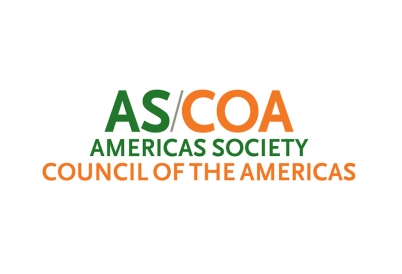Guide: The 2016 U.S. Elections
Guide: The 2016 U.S. Elections
On November 8, 2016, the United States will elect a new president and vice president, as well as 435 members to the House of Representatives, 34 U.S. senators, 11 governors, and hundreds of state and local positions. In the run-up to Election Day, parties hold primaries and caucuses in most races to select their nominees.
In this guide, AS/COA Online breaks down the election as it relates to Latinos in the United States, as well as the Americas as a whole, with a focus on the issues of trade, immigration, and U.S. foreign policy in the region. Check out the latest updates and polls, and get profiles of all the candidates to see where they stand on the issues and their ties to Latin America.
After beating out a combined field of more than 20 candidates, former First Lady, Senator from New York, and Secretary of State Hillary Clinton and businessman Donald Trump are the respective nominees for the Democratic and Republican parties. Below, we compare the two on a handful of key issues.
From outreach to turnout, here’s what you need to know about the Latino voting bloc, which could play a decisive role in the 2016 election outcome.
Hillary Clinton may poll well ahead with Latinos in Arizona, Colorado, Florida, and Nevada, but she still has to catch up to Barack Obama’s 2012 numbers.
Florida’s changing Latino demographics are turning the swing state blue, says the polling firm’s Anthony Williams in this podcast.
Donald Trump's rhetoric overlooks the extent of U.S.-Mexico economic and demographic ties, writes AS/COA’s Carin Zissis for World Politics Review.
A look at how Hispanics voted in U.S. primaries offers lessons for the 2016 general election.
Trade is one of the few issues in the campaign that does not divide cleanly down party lines.
U.S. President Barack Obama makes a historic trip to Cuba in late March. But not all the candidates agree with the rapprochement.
From mass deportation to pathways to citizenship, find out leading candidates' proposals.
AS/COA Online takes a look at Latin American connections for a handful Democratic and more than a dozen Republican presidential hopefuls in the 2016 race for U.S. president.
Mapping the Latino vote in the primaries
Updated June 8 — Which U.S. party holds more sway over the Latino vote? The Democrats—and that could have big implications for the November 8 general election. In this primary season, Latinos turned out at a rate of 2 to 1 for Democratic primary contests over Republican ones, even while overall Republican turnout is hitting record numbers. Based on exit polls and vote counts, we project in the map above how many Latinos participated in the primary contests, and from that, the rate at which they’re turning out for both parties in each state.
Not every state that held a primary is included on the map above. For some states that held caucuses, exit polls may not be available. For others, Latinos made up 1 percent or less of those surveyed in exit polls in both parties, and so we're not able to calculate significant comparable turnout rates.
An estimated 13.1 million U.S. Hispanics are expected to cast ballots for president in November—just over one in 10 of all voters. The Republican Party, if it wants its nominee to have a shot at winning the general election, must get close to half of those votes, per polling firm Latino Decisions. In the last six elections, 40 percent has been considered the “Latino threshold,” i.e. the number above which a Republican candidate must garner to win, as George W. Bush did in 2004. But pollsters say that in 2004 Latinos only represented 7 percent of the electorate. With a higher percentage of Latinos voting comes a higher threshold. In the swing states of Colorado, Florida, Nevada, Ohio, and Virginia—which together represent 75 of 538 Electoral College votes—the threshold is 44, 47, 45, 43, and 46 percent, respectively.
The one factor working in the Republicans' favor? Only 48 percent of eligible Latino voters turned out to vote in 2012, compared to 61.8 percent of all voters.
Sources: Exit polls from CBS News, and vote tallies from Politico. Iowa and Nevada caucus turnout figures from Edison Research and CNN.



















